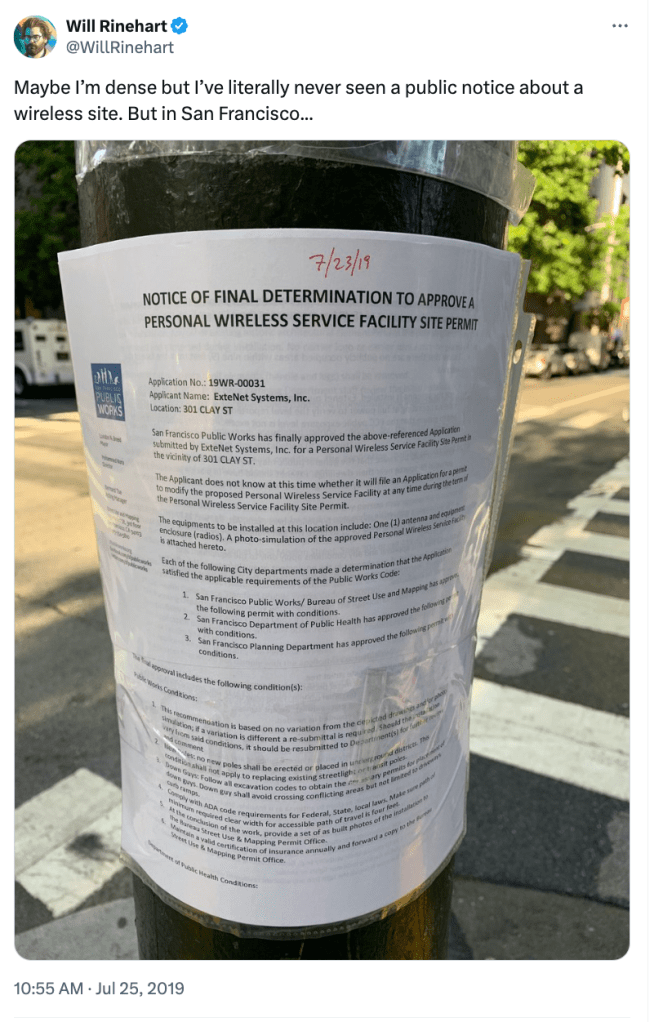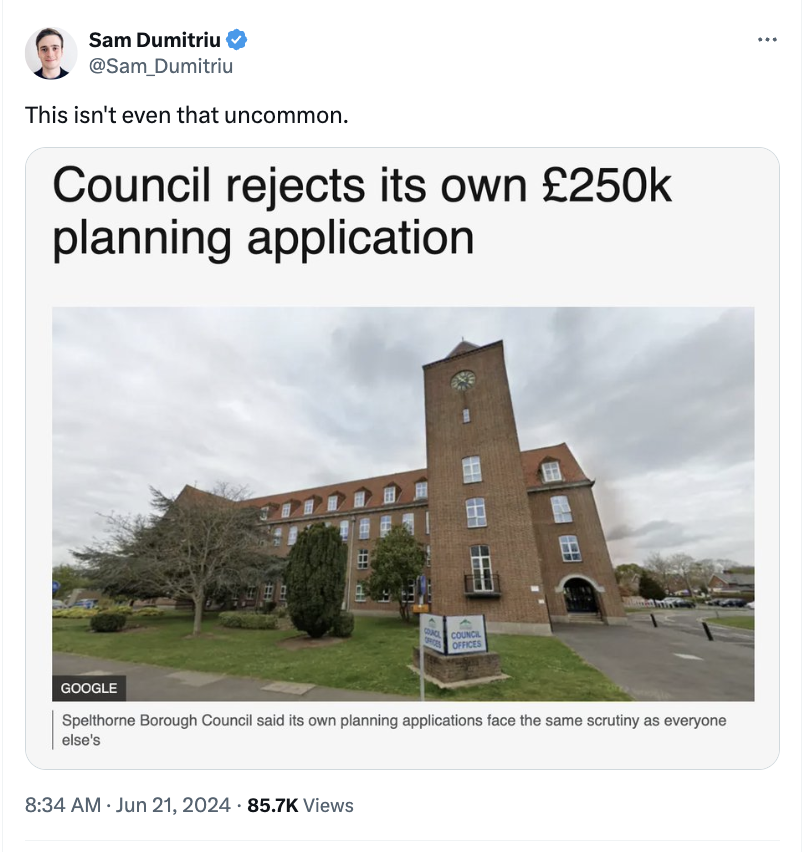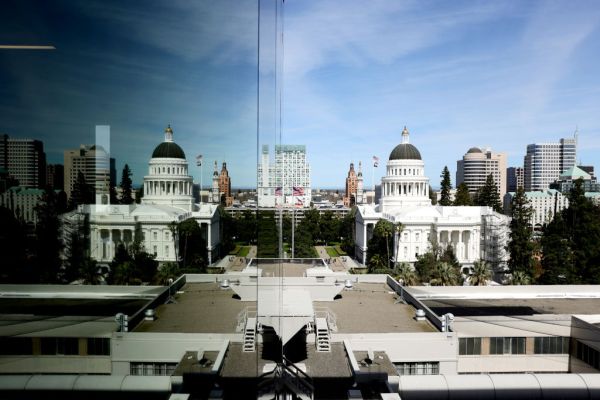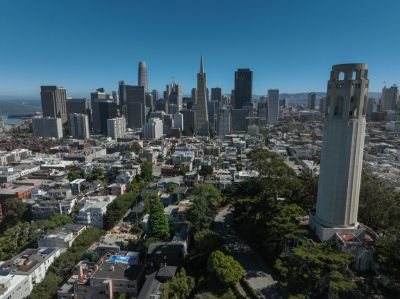Welcome back to Techne! The Italian city of Venice was built on a lagoon, a fact that still amazes me. You can learn all about how this happened in this 2.5-minute clip. Also, if you want to understand why Venice was so important in its heyday, I would suggest reading about the Venetian Arsenal, "one of the earliest large-scale industrial enterprises in history."
How the Vetocracy Paralyzes Progress
Political scientist Francis Fukuyama is right, at least about one thing. The American political system is a vetocracy, a system ruled by vetoes. And in recent decades, this excessive power of the veto has paralyzed decision-making at every level, frustrating efforts to build homes, nuclear power plants, and solar and wind projects; add new hospital beds; lay railroad tracks; start businesses; and manage wildfires.
Once you start looking for it, you will notice how pervasive the problem of vetocracy is.
In a 2016 interview with journalist Ezra Klein, Fukuyama explained:
I coined a phrase in the book [The Origins of Political Order] — “vetocracy,” meaning “rule by veto.” And the broader argument is that the American political system has always made it very hard for the government to actually do things because it gives a lot of parts of the political system veto rights over what the system does.
In most of the 20th century this was not a terrible system, because there was a lot of overlap between the major political parties. And so all of the major pieces of legislation — the Great Society, the Reagan tax cuts — were based on cooperation between Republicans and Democrats. But a lot has changed, including the partisan polarization in Congress and in the broader society, as well as the rise of interest groups.
Fukuyama, however, applies vetocracy too narrowly. Vetocracy is not just a problem of Congress. Veto problems also afflict federal agencies like the Food and Drug Administration and the Environmental Protection Agency, as well as state legislatures, state-level administrative agencies, all the way down to local governments and municipalities.
To be clear, I see vetocracy as related to but separate from the broader problem of red tape. Red tape, permitting, and other limitations regulate conduct. Laws that regulate conduct need to be judged on their own merits, but vetocracy isn’t regulation of conduct. Vetocracy is about the needless delays created through the many points throughout our institutions at which beneficial progress can be stopped cold—by a business competitor, a resistant neighbor, a slow government agency, or a litigious special interest group.
You don’t have to look hard to find the vetocracy in action—just spend some time reading up on San Francisco.
Rule by veto in San Francisco.
While I always knew that San Francisco had problems building homes and infrastructure, it became very real for me a couple years back when I was walking down the street and a posted sign caught my attention. It was a notice for a permit to site a small wireless antenna, inviting the public to weigh in on the antenna’s potential approval. It was, quite literally, a totem dedicated to vetocracy.
Housing is where you can find some of the most egregious examples of the San Francisco vetocracy.
For example, just before the pandemic hit, 77-year-old Patrick Quinlan got approval to build 10 new housing units on a 17,400-square-foot lot. The only reason I know this is because his troubles were covered in Mission Local, a website dedicated to hyperlocal San Francisco news, with an incredible headline: “Development Hell: How a 40-year-old Bernal Heights project finally got approved.” I’m still astonished by one of the quotes attributed to Kathleen Campbell, a resident of the area who had long opposed the development: “The current proposal is the best option we’ve seen in over 22 years.” Eventually Quinlan hired a housing consultant, who solicited input from neighbors and completely redid the plans to get the building approved and built.
A project to build housing in the Balboa Reservoir area in San Francisco has a long history of being shot down by neighboring residents. According to the San Francisco Chronicle, “Three times in the 1980s, voters faced the question of whether housing should be built there. They first rejected the project, then approved it and finally voted it down a second time.”
In 2014, Habitat for Humanity in San Francisco put forward plans for a 20-unit affordable housing project in the nearby municipality of Redwood City. Fast forward three years, and in 2017, an attorney invoked the California Environmental Quality Act (CEQA) to halt the project, arguing that the city had neglected to assess the project’s effects on traffic and the scenic views, particularly the one visible from his home. Attorneys Chris Carr, Navi Dhillon, and Lucas Grunbaum documented the proceedings in a report titled “The CEQA Gauntlet,” noting that,
The plaintiff ’s public statements underscore the realities of CEQA litigation. Rather than being used to ensure consideration of environmental issues, project opponents frequently use CEQA as a cudgel to delay projects, obtain concessions, or force developers to cancel projects altogether. In fact, the same attorney admitted that he had threatened CEQA litigation against other nearby projects, forcing one apartment developer to eliminate an entire floor to avoid litigation, while another developer abandoned its 91-unit condominium project.
They also recounted the problems faced by the University of California, San Francisco in updating its Parnassus medical campus. Plans for modernizing the nearly century-old campus centered on building a new 560,000-square-foot Helen Diller Medical Center, which was to boost the in-patient bed capacity by nearly 60 percent, enabling UCSF to serve thousands more patients annually, many of whom would otherwise be turned away without the expansion. However, in February 2021, three organizations filed separate lawsuits attempting to halt the UCSF project. While it eventually got built, the lawsuits slowed the process.
A big reason for the limited housing is the ease with which people can stop development. As Bay area resident Ryan Delk noted, “Something you may not know about San Francisco: There are ~6 people who oppose nearly every new development in SF (residential & commercial), successfully using various loopholes and review processes to delay them by months or years. Six people holding back an entire city.”
It is also exceedingly difficult to start a business, because your local competitors can gum up the permitting process.
Flying Falafel sought to expand to a second location in a vacant storefront on Castro Street. However, Gyro Xpress, a neighboring restaurant, used San Francisco’s Discretionary Review process to force a public hearing before the notoriously capricious Planning Commission, which one commenter described as “the minotaur in San Francisco’s permit labyrinth.” The competitor successfully blocked Flying Falafel’s permit, preventing the location from opening.
If you think this is just a one-off, there’s the experience of Joey Mucha, a Skee-Ball champion who had plans to turn his warehouse into a restaurant, bar, and arcade dedicated to the game. But community activists opposed the project, arguing that it would fuel the ongoing gentrification in San Francisco. Then there’s Jason Yu, who abandoned his plans to open a dessert shop after battling with his competition for 22 months over city approvals. The owners of Garden Creamery, whose ice cream business sat half a block from Yu’s proposed storefront, drove the public review process.
The owners of apparel business San Franpsycho ran into trouble when they tried to open a café offering pies and ice cream alongside their existing store. San Francisco’s rules forced them into a public comment process, requiring notifications to neighbors within 150 feet about the planned changes. Anyone could object. While they ultimately opened the café, the process was “pretty expensive and pretty painful,” according to one employee.
Even without an arduous Discretionary Review, it is not easy to get approval to expand a small business. Yoko and Clint Tan are world-renowned ramen cooks, having been recognized at the World Ramen Grand Prix in Japan. For five years, they ran a successful pop-up shop in Daly City, California. But when they attempted to open a location in San Francisco, they encountered the full force of the city's bureaucracy. As the San Francisco Chronicle framed it, “All they wanted was to open a noodle shop. Their tangle with S.F. bureaucracy has them regretting they tried.” .They eventually succeeded in opening the shop.
San Francisco is no stranger to excessive budgeting and stalling permits:
- Due to a CEQA lawsuit, a bike lane in San Francisco was delayed by four years, during which time the city couldn’t even put up a basic bike rack as a result of the legal stoppage.
- Twenty years ago, San Francisco had an ambitious plan for a bus rapid transit (BRT) lane, running from downtown to the beach to alleviate traffic congestion. But after enduring years of meetings, studies, and legal challenges, the BRT project remains stalled.
- The San Francisco city government scrapped a $1.7 million public toilet project in the Noe Valley neighborhood after failing to navigate its own labyrinthine permitting process.
- It took four years and more than $20,000 to get a trash can installed.
- San Francisco routinely engages the public for input on small transit improvements, such as this change to eliminate one parking space and add a right-turn-only restriction on a city street.
During the pandemic, the city tried to shut down some streets to allow for better social distancing, a move that was met by appeals from two people. But the appeals were a bit of a farce, as they were submitted to the city’s Board of Supervisors, which acts as both judge and jury in such cases. The appeals ended up costing $10,000 in city staff time and legal fees, “more time and money than it took to create the emergency programs in the first place,” Director of Transportation Jeffrey Tumlin told the San Francisco Chronicle.
Balancing democracy and vetocracy.
San Francisco is what happens when community input is affixed to every decision. Yes, some projects, especially ones that will affect many people’s quality of life, deserve public input. Moreover, research finds that soliciting public input and listening to local voices drives trust in government. But giving people the ability to voice their opinion in every decision has made a normal bureaucracy downright sclerotic. Vetocracy has also given rise to the view that nearby residents should be able to completely veto a project and, conversely, that a project must get the buy-in from the neighborhood to proceed. Add in the widespread belief that neighborhoods are less socially cohesive than ever and it makes sense why vetocracy has become such a problem.
San Francisco is a shining example of the worst excesses of procedural democracy, a problem that exists throughout the U.S. government. But it is not just something happening in the United States. Excessive veto power also causes problems in Germany, the United Kingdom, Australia, and Ireland. Here's a collection of examples I've curated.
I started off this piece praising Francis Fukuyama because I think he is right on this point: “We need to move our decision-making more towards the collective good side of the equation, which will then require injuring the interests of some of the narrower stakeholders.” As a general rule, there aren’t free lunches, but it seems like reforming government processes so that it doesn’t take four decades to build some homes could be a big win with relatively few costs.
Next week, I will discuss one of the federal laws that has helped create the vetocracy: the National Environmental Policy Act, or NEPA. Until then,
🚀 Will
Notes and Quotes
- Last night, SpaceX achieved the first private spacewalk. In other space news, journalist Eric Berger recently wrote about an important safety decision for NASA: “The choice concerns the Orion spacecraft's heat shield and whether NASA will make any changes before the Artemis II mission that will make a lunar flyby. Although Starliner has garnered a lot of media attention, this will be an even higher-profile decision for NASA, with higher consequences—four astronauts will be on board, and hundreds of millions, if not billions, of people will be watching humanity's first deep space mission in more than five decades.” Finally, here is a great primer on the case for colonizing Mars.
- Landfills efficiently hide our waste, making it easy to forget about our trash. This video reveals the ingenious engineering behind the facilities.
- Dating apps are losing popularity. Since they're a major way people find love in today’s digital world, this decline could spell demographic trouble. Economist Kyla Scanlon writes, “The youth aren’t (1) paying and (2) they aren’t really dating - only 56% of Gen Z adults and 54% of Gen Z men have been in a romantic relationship during their teen years, compared to over 75% of Baby Boomers and Gen Xers according to the Survey Center on American Life.”
- A North Carolina musician allegedly used AI to generate thousands of fake songs, then streamed them with bots to defraud music platforms of more than $10 million in royalties.
- Taiwan Semiconductor Manufacturing Co.'s Arizona chipmaking plant appears to be meeting its goals, with production yield rates matching those of comparable factories in Taiwan.
- From the San Francisco Chronicle: “In Oakland [California] and beyond, police called to crime scenes are increasingly looking for more than shell casings and fingerprints. They’re scanning for Teslas parked nearby, hoping their unique outward-facing cameras captured key evidence. And, the Chronicle has found, they’re even resorting to obtaining warrants to tow the cars to ensure they don’t lose the video.”
- China’s Huawei and its semiconductor partner, SMIC, are reportedly struggling to produce enough chips to supply Huawei's new Mate 70 trifold phone.
- Foreign Policy published an article earlier this year that has made waves for its harsh critique of Próspera, the charter city backed by Silicon Valley investors situated on the Honduran island of Roatán. Writer Snowden Todd, I think, has the correct perspective on the controversy: “Honduras’ current feud with Próspera is part of a pattern of reneging on obligations to investors and expanding state influence, not a one-time rectification of a coup by Silicon Valley billionaires.”
- The cost of cultivated meat could drop even further with some new advances in production, according to a new study. This thread explains the details.
- Policy analysts Robert D. Atkinson, Daniel Castro, Joseph V. Coniglio, and Stephen Ezell have laid out 82 policy prescriptions for a techno-economic administration, focusing on “policies to support faster productivity growth, a faster pace of innovation and innovation adoption, and a much larger U.S. share of global advanced-industry production.”
AI roundup
- Apple announced a new iPhone that will include a lot of new AI capabilities.
- The House Committee on Science, Space, and Technology passed nine AI bills.
- Oprah will air a one-hour special on AI tonight on ABC.
- Researchers studied how bigger AI language models affect language translators, finding that as models get 10 times more powerful, translators work 12 percent faster and earn 16 percent more per minute.
- Economist James Broughel thinks the draft guidelines from the U.S. Artificial Intelligence Safety Institute on dual use AI models failed, and I agree.
- AI policy wonk Dean W. Ball explains why we might find wisdom in the era of early textile manufacturing to inform our attitudes and policies towards AI.
- The Commerce Department has proposed reporting requirements for AI developers to ensure the technology can withstand cyberattacks.
- Time magazine has released its 100 in AI list.
- More than 100 current and former employees from leading AI companies sent a letter calling on California Gov. Gavin Newsom to sign the state’s new AI regulation bill.
Research and reports
- Do consumers really hate online ads? A new report says no: “Our findings suggest that either the disutility of ads for consumers is relatively small, or that there are offsetting benefits, such as helping consumers find products and services of interest.”
- It’s long been thought that Taiwan’s land reforms, which redistributed public lands and broke up large estates in the 1950s, pushed labor from agriculture into manufacturing, driving the nation’s economic growth. However, a new paper by economists Oliver Kim and Jen-Kuan Wang finds that these phases explain only a small portion of growth. Time to rethink Joe Studwell’s How Asia Works.









Please note that we at The Dispatch hold ourselves, our work, and our commenters to a higher standard than other places on the internet. We welcome comments that foster genuine debate or discussion—including comments critical of us or our work—but responses that include ad hominem attacks on fellow Dispatch members or are intended to stoke fear and anger may be moderated.
With your membership, you only have the ability to comment on The Morning Dispatch articles. Consider upgrading to join the conversation everywhere.